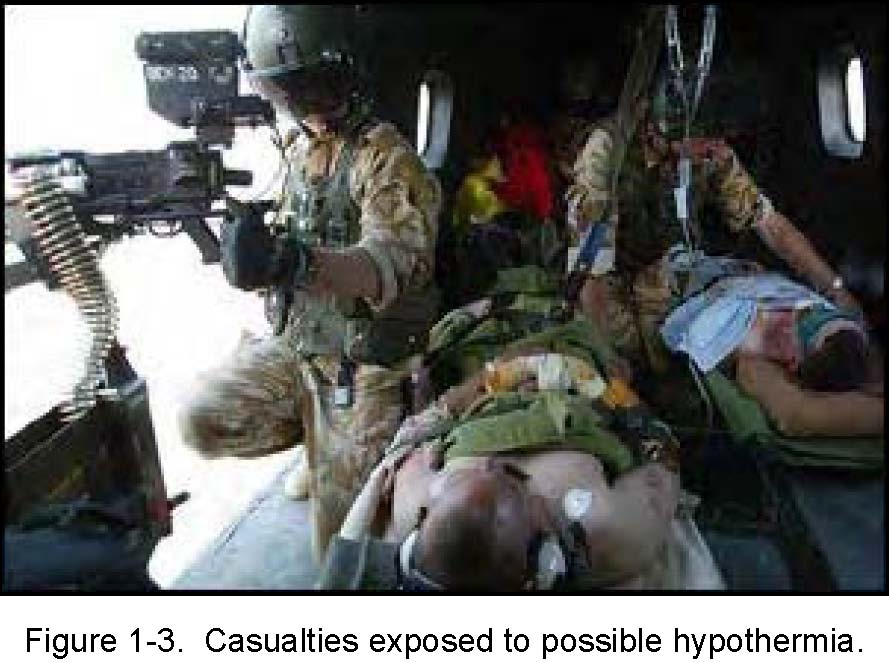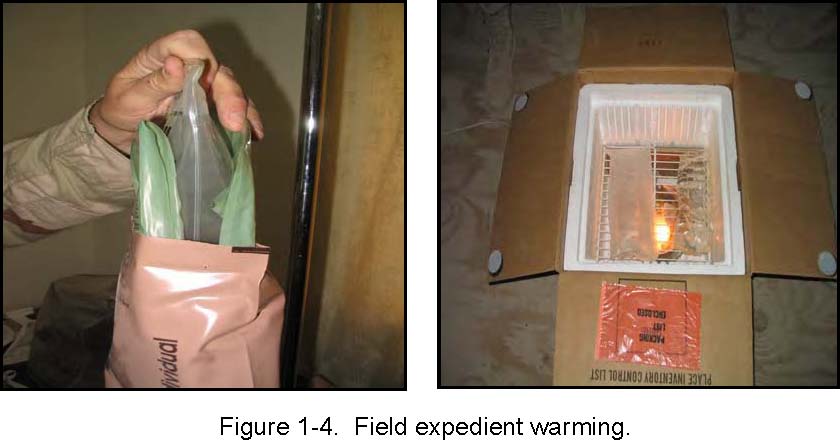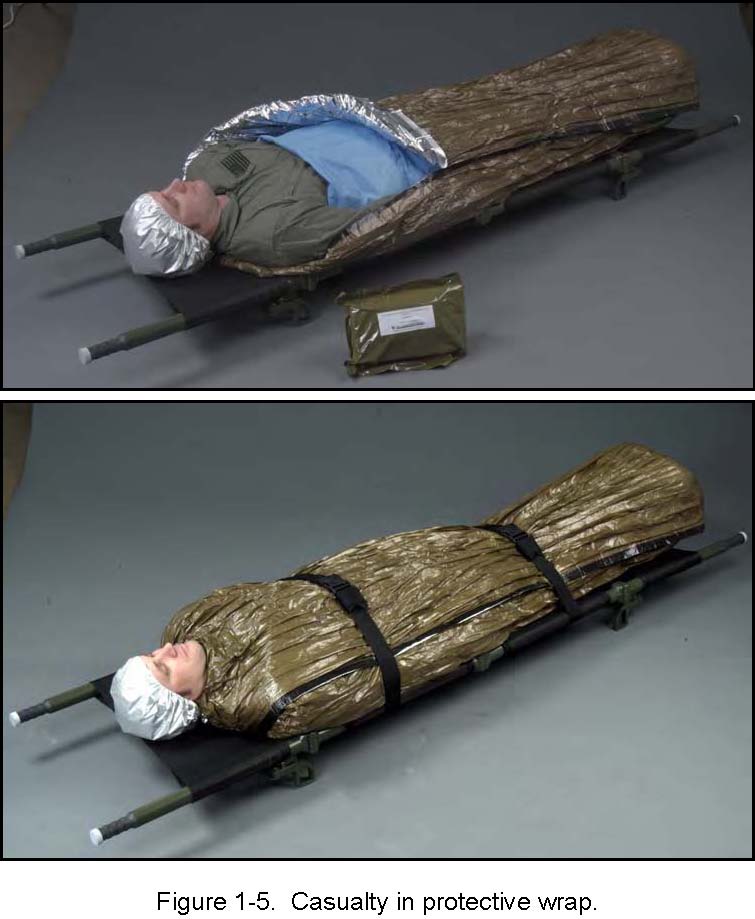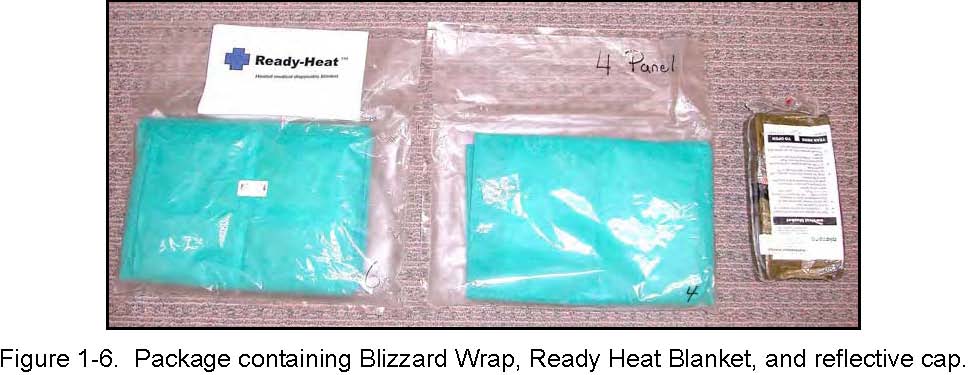 This is the Archived Desktop Edition.
This is the Archived Desktop Edition.
You should be transferred to the Newest Edition for Desktop and Mobile within 2 seconds.
Intravenous Infusions and Related Tasks
Lesson 1: Initiate an Intravenous Infusion and Manage a Patient With an Intravenous Infusion
1-4
1-4. HYPOTHERMIA PREVENTION
a. Care must be taken to protect the casualty from hypothermia (low body temperature). Casualties who are hypovolemic become hypothermic quite rapidly if traveling in a casualty evacuation (CASEVAC) or medical evacuation (MEDEVAC) asset and are not protected from the wind, regardless of the ambient temperature.
NOTE: Figure 1-3 depicts why casualties can rapidly become hypothermic. When transporting casualties by rotary-wing aircraft, they must be protected from the wind coming in the cargo doors when flying with the doors open.
b. Casualties who become hypothermic develop the vicious triad:
(1) Hypothermia.
(2) Acidosis (from decreased profusion secondary to shock and hypothermia).
(3) Coagulopathy (hypothermic patients lose their ability to clot).
c. When these three elements are present, the casualty’s blood will not clot. Most of these casualties need surgery to repair their wounds. However, if their blood will not clot, they must undergo a transfusion to augment their blood with fresh blood, clotting factors, or platelets. This can delay the life-saving surgery they need.
d. Prevention is the best method.
1) In cold environments, ensure IV fluids are warmed prior to administration. The use of MRE heaters on either side of an IV bag or a blood box with a hole cut in it and a light bulb to provide heat will help warm IV fluids (figure 1-4).
(2) Prior to evacuation, casualties must be wrapped in a blanket to prevent heat loss during transport (even if the temperature is 120 degrees Fahrenheit).
(3) Protect the casualty by wrapping them in a protective wrap (Blizzard Rescue Wrap®) as shown in figure 1-5.
NOTE: Figure 1-5 shows the Blizzard Wrap which contains a cellular technology that traps air in these cells and allows the body heat to warm them. It also shows another new technology, a blanket that warms itself when exposed to air. The Ready Heat Blanket® warms to between 110 and 118 degrees Fahrenheit and, in conjunction with the Blizzard Wrap, provides excellent protection from hypothermia. Figure 1-6 shows a new product developed by North American Rescue Products that contains a Blizzard Wrap, Ready Heat Blanket and a reflective cap to prevent heat loss during transport.
e. All of these tasks and products help to prevent hypothermia from developing in casualties that have become hypovolemic, regardless of ambient temperature. Prevention of hypothermia is extremely important even if the ambient temperature is above 100 degrees Fahrenheit.




